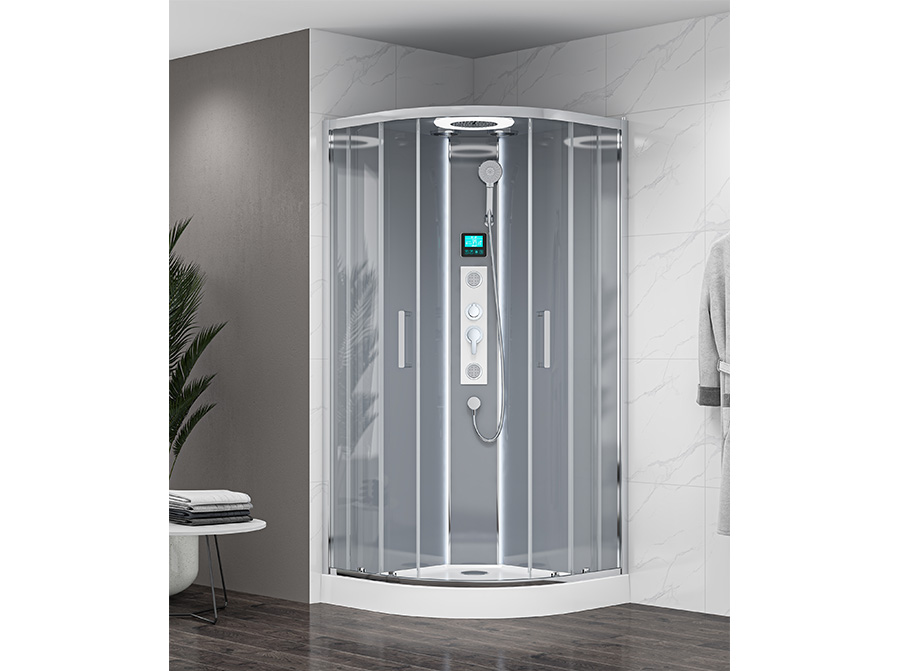Market landscape and regional opportunities
In recent years, the demand for premium shower doors has risen steadily across both Europe and South America, driven by expanding residential construction, urban renovation trends, and the growing preference for modern, stylish bathroom aesthetics. In Europe, homeowners, interior designers, and real estate developers are placing increasing importance on sleek glass enclosures, frameless designs, and customizable shower solutions. The trend toward minimalistic and luxury bathroom interiors has encouraged suppliers to innovate in materials, finishings, and functional features such as easy-clean coatings and tempered safety glass.
Simultaneously, in South America, the rising middle class, rapid urbanization, and hotel and hospitality sector upgrades are creating significant opportunities for manufacturers and suppliers of high-quality sanitary ware. Many developers are seeking suppliers who can provide reliable shipments of durable, elegant shower doors that balance affordability with aesthetic appeal. Understanding the differing market dynamics, consumer expectations, and regulatory requirements in each region is crucial for companies that aim to optimize sourcing strategies. Businesses that can align supply capabilities with evolving market trends are positioned to capture higher margins and long-term market share.
Key considerations when selecting a supplier
Choosing the right supplier is a multifaceted process that extends far beyond price comparison. Evaluating manufacturing capabilities, material quality, hardware durability, adherence to regional standards and certifications, and flexibility in production is essential. For instance, a European supplier may provide advanced design capabilities, stringent quality control, and compliance with CE certifications, while a South American supplier may offer competitive pricing but require careful assessment of production consistency and delivery timelines.
Other considerations include verifying production processes, sourcing of raw materials, tolerance for custom dimensions, and post-sale support. Communication efficiency, responsiveness, and the ability to manage volume fluctuations are critical to avoid bottlenecks in supply. Selecting the right partner means aligning their operational capacity with your strategic goals for market entry, expansion, or renovation projects. Establishing trust and transparent operational procedures from the outset often distinguishes long-term success from short-term transactions.
Export processes and logistical challenges
Cross-continental sourcing from Europe or South America entails complex logistics and export procedures that demand meticulous planning. Shipping schedules, customs documentation, inland transportation, port handling, and cost variability must all be accounted for when calculating total landed cost. Glass shower doors are inherently fragile and require specialized packaging, including reinforced crates, shock absorption materials, and humidity control measures to prevent breakage or surface damage during transit.
Moreover, import duties, trade agreements, fluctuating shipping rates, and climate-related delays can all impact the reliability and predictability of supply. Establishing buffer inventories, partnering with experienced freight forwarders, and coordinating production timelines with shipping schedules can significantly mitigate these risks. Understanding each region’s infrastructure and port efficiency, as well as regional regulatory compliance for materials and packaging, is essential for smooth supply chain operations.
Sustainability trends within shower door supply
Sustainability has become a defining theme in the modern bathroom fixtures market, and shower doors are no exception. Suppliers in both Europe and South America are increasingly integrating eco-friendly materials, such as recycled glass panels, low-VOC coatings, and corrosion-resistant hardware, while emphasizing manufacturing processes that reduce energy consumption and environmental impact. Buyers who seek to differentiate in competitive markets benefit from aligning with suppliers that demonstrate credible environmental practices, including energy-efficient production, responsible waste management, and circular-economy initiatives.
Beyond regulatory compliance, embracing sustainability can strengthen brand reputation and attract environmentally conscious end-users. Market awareness of green certifications is rising, and suppliers who proactively adopt eco-conscious approaches are better positioned for long-term partnerships. Green sourcing can also reduce operational costs through energy savings, waste reduction, and streamlined logistics, while enhancing overall resilience and adaptability to future environmental regulations.
Building long-term partnerships in Europe and South America
Establishing reliable sourcing channels in Europe and South America requires treating supplier relationships as collaborative, long-term partnerships. Clear communication, alignment on quality assurance standards, regular factory inspections, and flexible contractual arrangements are all pivotal to fostering mutual trust. Combining volume forecasts with supplier capacity planning promotes transparency and facilitates smoother operational flows.
Furthermore, companies that engage suppliers in product innovation initiatives, joint market research, and new distribution strategies often find themselves benefiting from value-added collaboration rather than merely transactional exchanges. Trust, shared objectives, and consistent performance monitoring enable suppliers and buyers to navigate market volatility, technological evolution, and regulatory changes more effectively. A well-nurtured partnership ensures sustainable supply, cost efficiency, and competitive advantage in both European and South American markets.


 English
English Français
Français Español
Español
